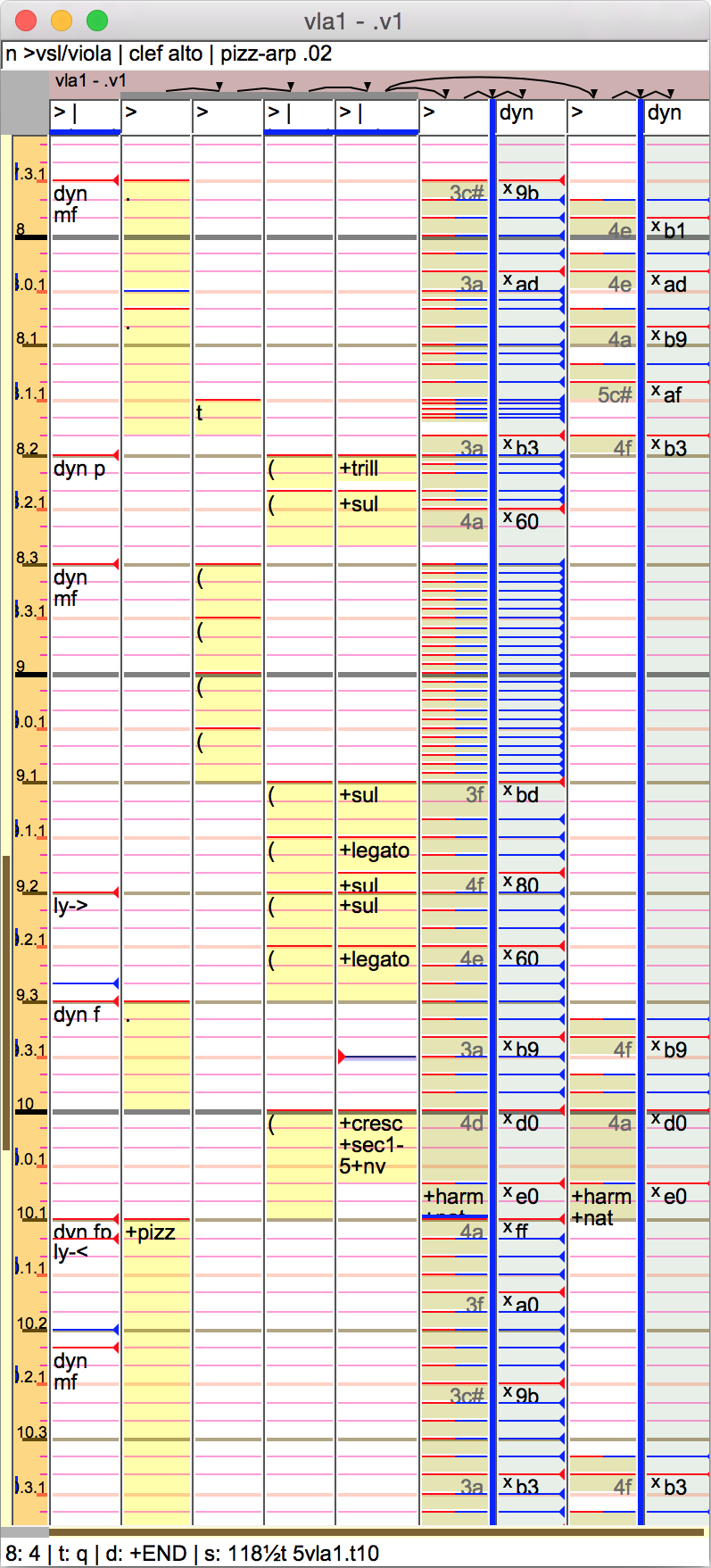
String quartets which use the VSL sample library. They use notation to get a somewhat realistic sound from it, with additional annotations to produce a staff score.
These use guzheng notation which simulates hand placement and open string restrictions charactistic of the instrument.
Electronic scores which experiment with algorithmically generated scales, and expressive notation for pitch and dynamic curves.
These use a string simulated via partial differentials, that models finger positions, and collisions with frets and backboard. The actual model is proprietary to the NESS project, I only interface with it:
These use a notation specialized for the complex pitch curves necessary in this kind of music.
These use notation whose realization may vary slightly depending on instrumental techniques and genre conventions. The result is that doubled parts and repeats will differ slightly, giving a more naturalistic sound. Complicated tempo changes are expressed with nested tempos.
They use samples from my own instruments.
There’s a text-only score language, which is similar in concept to lilypond, though of course with different capabilities.
This uses the built-in incremental sampler:
Old pieces, here for sentimental reasons. Done with ST3 and ImpulseTracker.
Soundtrack for a short animation:
Chip tunes:
Other